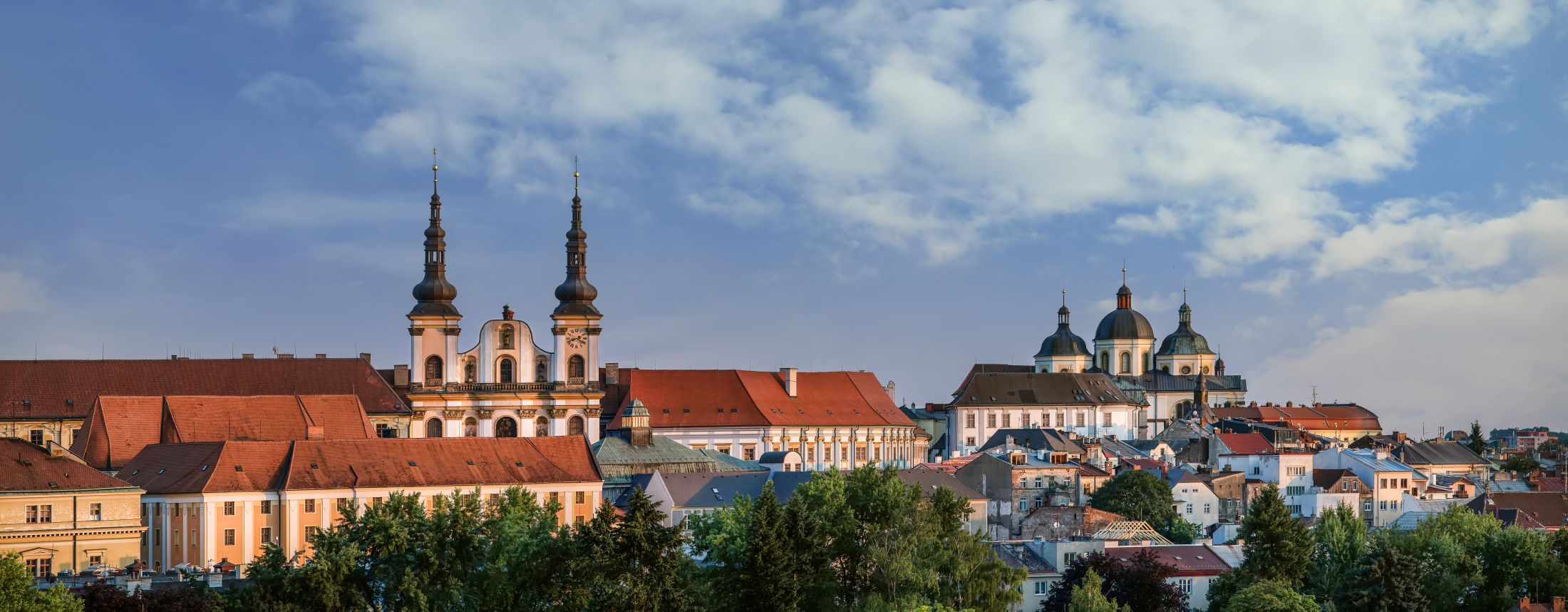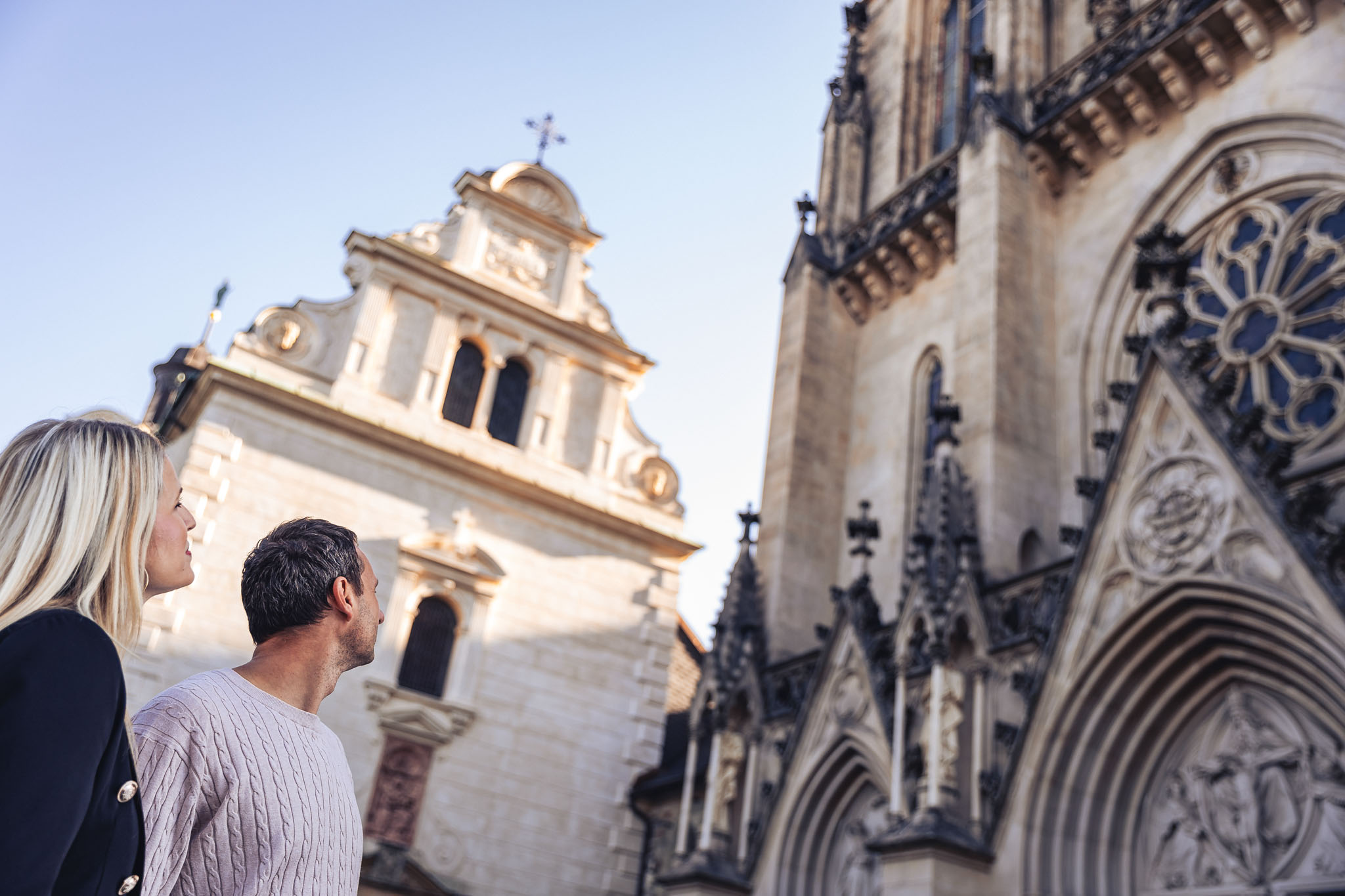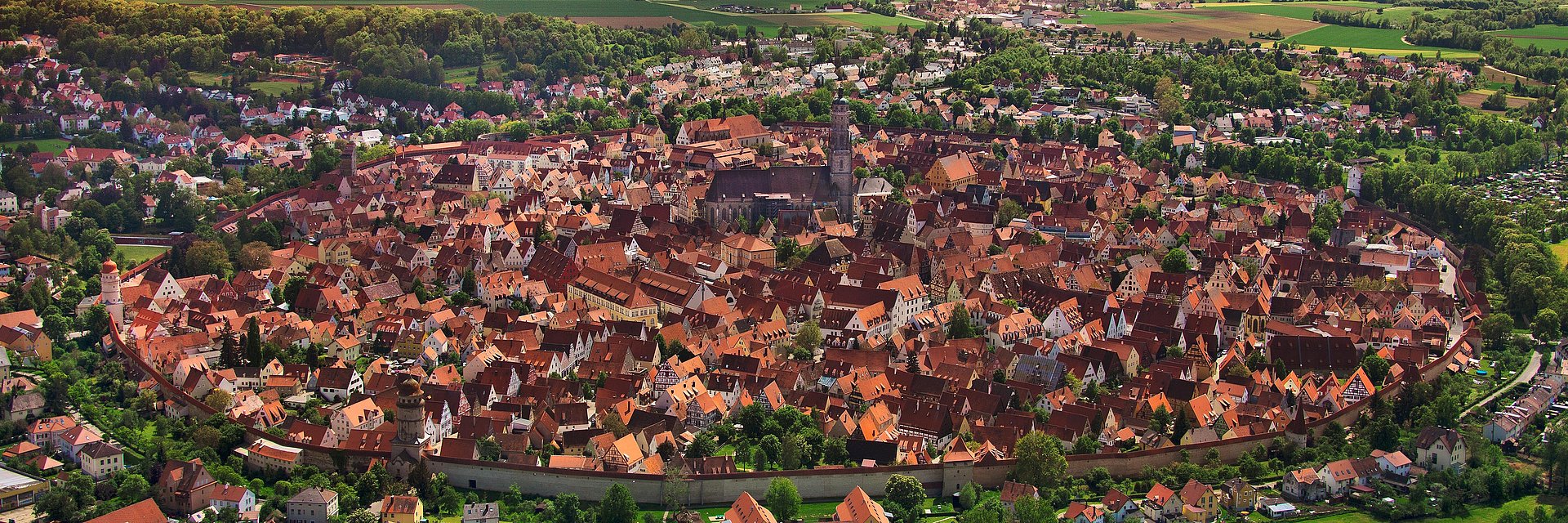Attractions

- Olomouc is the second largest urban reservation after Prague.
- At least from the 16th century, Olomouc has been referred to as a city founded by Julius Caesar. One of the earliest mentions of the possible foundation of Olomouc can be found in the work of Polish heraldist Bartosz Paprocki – Mirror of a Famous Moravian Margraviate (Book Four).
- In the second half of the 2nd century C.E., the Romans established a marching camp where today’s city district of Neředín is located. It is the northernmost evidence of their activities in Central Europe.
- The city became one of the main centres of Moravia in the early Middle Ages.
- A diocese was established here in the 11th century.
- In 1573, the second oldest university in the Czech lands was established in Olomouc.
- Olomouc suffered devastating occupation by the Swedish Army (1642–1650) during the Thirty Years’ War, during which the city was completely destroyed and the vast majority of its inhabitants either died, or moved out from the devastation of Olomouc.
- During the Baroque period, a number of unique monuments, buildings, and churches were built here (the Holy Trinity Column, a collection of six Baroque fountains, the Church of St Michael…).
- Olomouc was transformed into a Baroque fortress during the 18th and 19th centuries, becoming a significant military centre of the Austrian Monarchy.
- The monumental Holy Trinity Column from the first half of the 18th century became a UNESCO World Heritage Site in 2000.
- A number of original vaulted rooms including the Ceremonial Hall have been preserved inside the Town Hall on the Upper Square. The interior of the Gothic Chapel of St Jerome in the town hall is adorned by a unique ribbed vault (the oldest ‘Danube’-type ribbed vault in our country).
Personalities associated with Olomouc

- Jindřich Zdík (ca. 1083–1150), the Bishop of Olomouc, was instrumental in the completion of St Wenceslaus Cathedral and ordered the construction of the Bishop’s Palace, the only Romanesque monument in Olomouc preserved to this day.
- In 1306, King Wenceslaus III, the last Bohemian monarch from the powerful House of Přemysl, was murdered there.
- In todays’ Chapel of St John Sarkander, which stands on the site of the former Olomouc prison, St John Sarkander, a patron saint of Moravia, was tortured to death in 1620. His remains are deposited in St Wenceslaus Cathedral. A part of the torture chamber with the original rack can be seen in the lower part of the chapel.
- Since 1623, St Paulina has been the patron saint of Olomouc. She was made the patron saint when a severe plague hit the city and a procession with her relics helped avert the deadly epidemic. Her relics are stored in the Church of St Maurice where an altar dedicated to her stands.
- Empress Maria Theresa visited Olomouc twice. In 1754, she attended the ceremonial consecration of the Holy Trinity Column. Preserved to this day, the Theresian Gate was named in her honour.
- When staying in Olomouc in 1767, eleven-year-old W. A. Mozart composed his Symphony No. 6 in F major.
- Important Czech philologist and historian Josef Dobrovský was appointed rector of the general seminary for the training of priests at Hradisko (now part of Olomouc) in 1789. While in Olomouc, he wrote the History of the Bohemian Language and Literature.
- Gregor Johann Mendel, biologist, founder of genetics and discoverer of the basic laws of inheritance, studied at Olomouc University between 1840 and 1843. His commemorative plaque can be found on the building of the Sts Cyril and Methodius Faculty of Theology, Palacký University.
- In Olomouc in 1848, Franz Joseph I succeeded as Emperor of Austria, remaining in power for the next 68 years.
- Famous Austrian composer and conductor Gustav Mahler lived in Olomouc in 1883. His bust and commemorative plaque is installed in the foyer of the Moravian Theatre where he worked.
- The founder of psychoanalysis, Sigmund Freud stayed in Olomouc as a young military doctor during military manoeuvres in 1886. His stay is commemorated by a plaque with a bust on a building that housed a café mentioned in Freud’s correspondence (today’s Opera Café on the Upper Square).
- One of the most influential 20th-century philosophers, Ludwig Josef Johann Wittgenstein, spent several months of 1916 as a soldier in Olomouc and worked here on his book Tractatus Logico-Philosophicus.
- In May 1995, Pope John Paul II paid an official visit to Olomouc.
Partner cities

| City | Country | Partner city since |
|---|---|---|
| Tampere | Finland | 1986 |
| Antony | France | 1990 |
| Nördlingen | Germany | 1990 |
| Lucern | Switzerland | 1992 |
| Veenendaal | The Netherlands | 1993 |
| Owensboro | Kentucky, USA | 1994 |
| Subotica | Serbia | 1996 |
| Pécs | Hungary | 2002 |
| Old Town, Bratislava | Slovakia | 2012 |
| Kchun-ming | China | 2016 |
| Kraków | Poland | 2016 |
| Makarska | Croatia | 2016 |
| Berlin – Treptow-Köpenick | Germany | 2022 |



 Čeština
Čeština